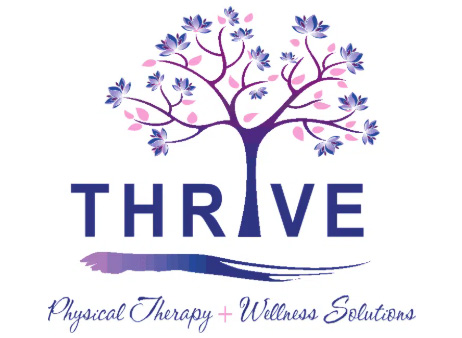Golf is a game of precision, rhythm, and rotational power. But behind every smooth swing is a body that moves well. That’s why mobility, strength, and control are essential—not only for improving performance but also for reducing the risk of injury.
At THRIVE Physical Therapy, we work with golfers of all ages and skill levels who want to build not only a better swing—but also a stronger, more mobile body that supports it. In this post, we’ll break down the essential movement patterns that fuel a great golf swing, and how you can train your body to make every round feel more effortless.
Why Your Body Matters More Than Your Club
You could have the best driver on the market, but if your hips are stiff or your core is weak, your golf swing will suffer. Golf requires a coordinated effort from your entire body—hips, shoulders, core, spine, and even your ankles.
The golf swing is a full-body movement that relies on:
- Hip mobility for clean rotation
- Core strength for stability and power
- Shoulder control for follow-through
- Spinal mobility for smooth transitions
If just one area is tight or weak, your swing will compensate—and that’s when inconsistencies and injuries start to creep in.
Common Physical Limitations That Affect the Golf Swing
- Poor Hip Mobility: Limits rotation, causing your lower back to overcompensate.
- Weak Core Muscles: Reduces power and control, especially during follow-through.
- Stiff Thoracic Spine: Restricts your backswing and follow-through.
- Tight Shoulders: Leads to a choppy swing and poor form.
The good news? All of these issues can be improved with focused movement and strength work. That’s why golfers who want to stay in the game for the long haul prioritize how their body moves—not just how it looks at setup.
5 Exercises to Improve Your Golf Swing
Here are some of our go-to movements at THRIVE to help clients build a better golf swing through mobility and strength:
- Hip Openers (Hip Circles): Loosen the hips to improve rotation and reduce back strain.
- Cat-Cow Stretch: Enhances spinal mobility and helps with posture control.
- Dead Bugs: Build core stability without stressing the spine.
- Wall Angels: Improve shoulder range and postural strength.
- Lunge with Rotation: Train the body to rotate safely and efficiently.
Each of these exercises mimics elements of the golf swing, helping your body move more freely and generate more power from the right places.
Golf Swing Basics: What to Do (and What Not to Do)
Whether you’re a beginner or looking to correct bad habits, here are a few golf swing basics that make a big difference:
✅ DO keep your posture strong and neutral throughout your setup. A rounded spine or arched back can reduce your ability to rotate cleanly.
✅ DO use your hips—not your lower back—for rotation. Shift your weight properly during backswing and follow-through.
✅ DO engage your core. Stability in your trunk protects your spine and improves consistency.
🚫 DON’T swing with just your arms. Power comes from the ground up—through the legs, hips, core, and then shoulders.
🚫 DON’T forget to warm up. A few dynamic stretches like hip circles, arm swings, and trunk rotations go a long way.
🚫 DON’T ignore pain. If something doesn’t feel right, it’s a sign your body needs attention.
Why Choose THRIVE to Improve Your Golf Swing?
Many physical therapy clinics can offer exercises. But at THRIVE Physical Therapy, we go a step further. Our golf-focused approach is tailored specifically for players who want to:
- Move better
- Reduce pain
- Prevent injury
- Increase power and endurance
Here’s what makes us different:
✔️ One-on-one assessments: We evaluate your posture, mobility, and swing mechanics to identify where limitations may be affecting your game.
✔️ Custom movement plans: You get personalized guidance—not a generic routine—designed to support your goals on the course.
✔️ Injury prevention focus: We don’t just rehab pain—we help you avoid it. Our goal is long-term strength, not temporary relief.
✔️ Golf-specific strategies: We speak your language. We understand the demands of golf, the movement patterns required, and how to help your body perform at its best.
Whether you’re dealing with nagging tightness, looking to increase distance, or want to prevent injury before summer golf heats up—we’re here to support you every step of the way.
The Power of Targeted Exercises for Golf Performance
The exercises we recommend at THRIVE—like hip circles, cat-cow stretches, dead bugs, wall angels, and lunges with rotation—aren’t just random stretches. They’re purposefully chosen to mimic the way your body needs to move during a golf swing. These movements help retrain your body to work in sync, improve joint flexibility, and activate the key muscle groups responsible for rotation, power, and control. By improving how your body moves off the course, you’ll improve how it performs on the course.
Your body is your most important tool in golf. It’s what allows you to create power, generate speed, and maintain form from your first drive to your last putt. That’s why golfers who take care of their bodies—with regular movement work, flexibility, and strength training—not only play better, but stay healthier for longer.
In our next blog, we’ll dive even deeper into each of these exercises, breaking down how they help and how to integrate them into your weekly routine. So stay tuned—your swing will thank you!
Ready to Improve Your Golf Swing?
You don’t have to guess what your body needs—we’ll help you find out.
📅 Book your FREE Discovery Visit today and get expert guidance on improving your mobility, strength, and overall golf performance.
📞 Call 239-431-7396 or schedule online: https://mkruethdpt.com/free-discovery-visit/
A better golf swing starts with a body that moves better. Let’s work together to build a stronger, more consistent game.
— THRIVE Physical Therapy & Wellness Solutions
